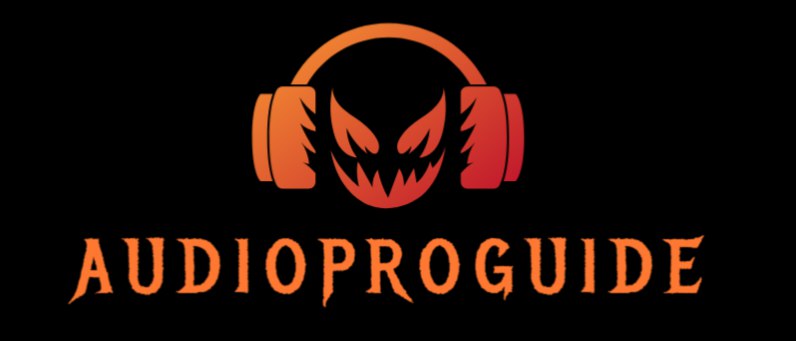Trapped within the captivating visuals of your video lies a treasure trove of sound – dialogue, music, and ambient noise that can stand alone as powerful audio gems. But how do you unlock this sonic bounty? Fear not, aspiring audiophiles, for this article is your guide to extracting audio from video like a seasoned pro.
A Concept about Converting Video to Audio
The process of converting video to audio involves the separation of the audio track from the visual content of a video file. This conversion is driven by the need to extract and utilize the auditory components independently, providing flexibility in repurposing or enjoying content in a purely audio format. The conceptual framework behind this conversion lies in the recognition of audio as a standalone entity with its own unique value, distinct from the visual elements of a video.
This conversion concept finds application in various scenarios. For instance, content creators may wish to extract the soundtrack from a video to use as background music for other projects or to republish on audio-centric platforms such as podcasts. Similarly, music enthusiasts might desire to strip away the accompanying visuals from a music video to focus solely on the auditory experience. Understanding the concept of video-to-audio conversion opens up creative possibilities, allowing users to explore and leverage audio content in ways not constrained by the original visual context.
Furthermore, this process can be seen as a means of adaptation, transforming multimedia content to suit diverse preferences and use cases. The ability to convert video to audio aligns with the growing trend of content consumption in various formats, catering to audiences who prefer audio-only experiences or have specific constraints that limit their access to visual content.
In essence, the concept of converting video to audio is rooted in the recognition of the intrinsic value of audio content and the need to provide users with the flexibility to engage with this content in a manner that best suits their preferences and requirements. This conceptual foundation sets the stage for exploring the technical aspects, tools, and considerations involved in the successful extraction of audio from video files.
Choosing the Right Tools for Audio Extraction
Selecting the appropriate tools for audio extraction is a critical step in ensuring a smooth and effective conversion from video to audio. The market offers a variety of software applications, online platforms, and command-line tools designed for this purpose, each with its own set of features and capabilities. Here, we delve into key considerations when choosing tools for audio extraction:
- Compatibility: Ensure that the chosen tool is compatible with the operating system of your choice (Windows, macOS, Linux). Verify compatibility with the specific version of the video file format you are working with (e.g., MP4, AVI, MKV).
- User Interface: Consider the user-friendliness of the tool, especially if you are new to audio extraction. A well-designed interface can streamline the process and enhance the overall user experience. Look for features such as drag-and-drop functionality and intuitive navigation to simplify the extraction process.
- Conversion Speed: Evaluate the speed at which the tool converts video to audio. Faster conversion times can be advantageous, especially when dealing with large video files or multiple conversions in a batch.
- Additional Features: Some tools offer advanced features such as batch processing, allowing users to convert multiple files simultaneously. Explore tools that provide options for customizing output settings, such as choosing the audio format, bitrate, and sample rate.
- Reliability and Reviews: Research user reviews and ratings to gauge the reliability and performance of the tool. Consider the reputation of the tool in terms of stability and the absence of glitches or bugs.
- Updates and Support: Opti for tools that are regularly updated to ensure compatibility with the latest video formats and operating system updates. Check for available support channels, including documentation, forums, or customer support, in case assistance is needed.
- Cost and Licensing: Assess the cost and licensing model of the tool. Some tools may offer free versions with limited features, while others require a one-time purchase or subscription.
By carefully considering these factors, users can select the right tools that align with their specific needs and preferences, facilitating a seamless and efficient video-to-audio conversion process. Additionally, staying informed about the latest advancements in audio extraction tools ensures that users leverage the most up-to-date and feature-rich solutions available.
Supported File Formats
Understanding the supported file formats is crucial when selecting tools for audio extraction. Different tools may have varying capabilities in terms of compatible video and audio formats. Here, we provide an in-depth exploration of common video and audio formats, shedding light on considerations for optimal extraction:
Video Formats:
- MP4 (MPEG-4 Part 14): Widely used for online streaming and multimedia content, MP4 is a versatile video format supported by many extraction tools.
- AVI (Audio Video Interleave): Developed by Microsoft, AVI is a popular format known for its compatibility with Windows platforms.
- MKV (Matroska Video): Known for its flexibility in supporting various audio and video codecs, MKV is a container format used for high-quality multimedia.
Audio Formats:
- MP3 (MPEG-1 Audio Layer III): A widely supported audio format known for its compression efficiency without significant loss of quality.
- AAC (Advanced Audio Coding): Commonly used for its improved compression over MP3 and is prevalent in online streaming and mobile devices.
- WAV (Waveform Audio File Format): An uncompressed audio format known for its high quality, often used in professional audio applications.
Container Formats:
- FLV (Flash Video): Used for online streaming and associated with Adobe Flash, FLV may require specific tools for extraction.
- OGG (Ogg Vorbis): A free, open-source container format often used for audio; OGG may be encountered in certain video files.
Ensure that the chosen extraction tool supports the specific video format of the file you intend to convert. Confirm that the tool allows extraction into desired audio formats without compromising quality. Be aware of any potential loss of quality when converting from one format to another, especially when choosing compressed audio formats.
| Video Format | Common Codecs | Audio Format | Common Codecs |
| MP4 | H.264, H.265 | MP3 | MPEG-1 Audio |
| AVI | DivX, Xvid | AAC | Advanced Audio |
| MKV | VP9, AVC | WAV | PCM, ADPCM |
| FLV | VP6, VP8 | OGG | Vorbis |
Steps to Convert Video to Audio
Converting video to audio involves a series of systematic steps that can vary slightly depending on the chosen extraction tool. While the specific user interface and features may differ, a general guideline for the conversion process typically includes the following steps:
- Importing the Video File: Begin by opening the chosen extraction tool and selecting the option to import or open a video file. Most tools provide a straightforward interface with a “Browse” or “Open” button for this purpose.
- Choosing Output Settings: Once the video file is imported, users often have the option to choose output settings for the audio file. This may include selecting the desired audio format (e.g., MP3, AAC) and specifying parameters such as bitrate and sample rate.
- Selecting Output Location: Specify the directory or folder where you want the extracted audio file to be saved. This step ensures that the converted audio file is easily accessible after the extraction process is complete.
- Initiating the Extraction Process: After configuring the output settings and file location, users typically initiate the extraction process by clicking a “Convert” or “Extract” button. Some tools may refer to this step as “Start” or “Begin.”
- Monitoring Progress: During the extraction, the tool usually provides a progress indicator, allowing users to monitor the status of the conversion. This visual feedback ensures transparency and informs users of the remaining time for completion.
- Verifying the Output: Once the extraction is complete, it is advisable to verify the output audio file. Users can play the extracted audio to ensure that it meets the desired quality and accurately represents the intended content.
- Saving the Extracted Audio: Save the extracted audio file to the designated location. Some tools may automatically save the file, while others may prompt users to confirm the save location.
- Additional Editing (Optional): Depending on the tool’s features, users may have the option to perform additional editing tasks, such as trimming or adjusting the audio. This step is optional and depends on the user’s specific requirements.
By following these general steps, users can successfully convert video to audio using their chosen extraction tool. It is essential to consult the documentation or help resources provided by the specific tool for any nuances or additional features unique to that software.

